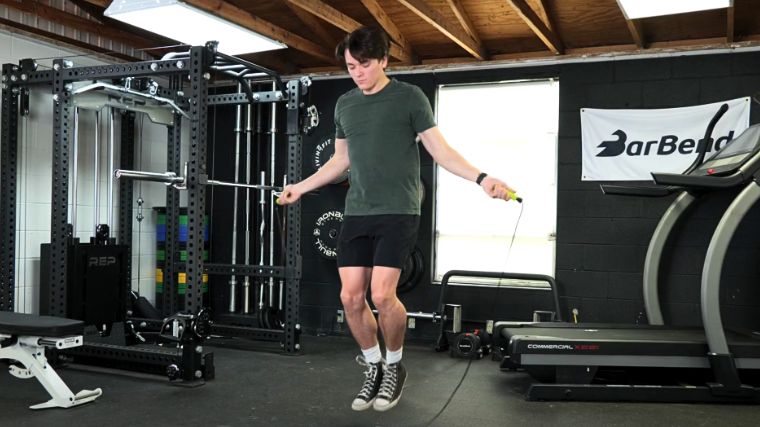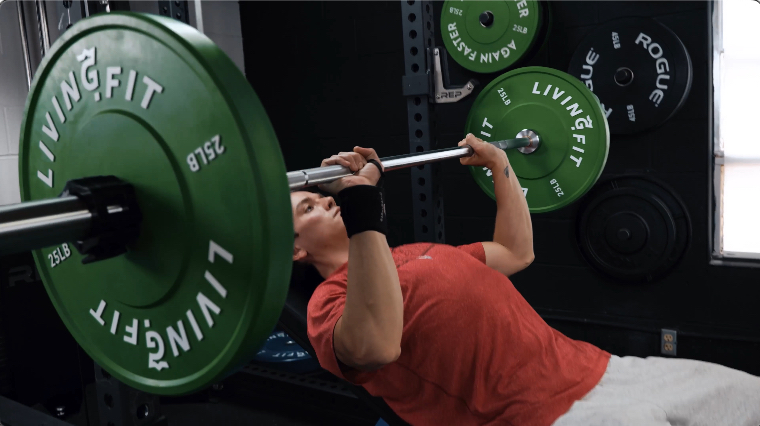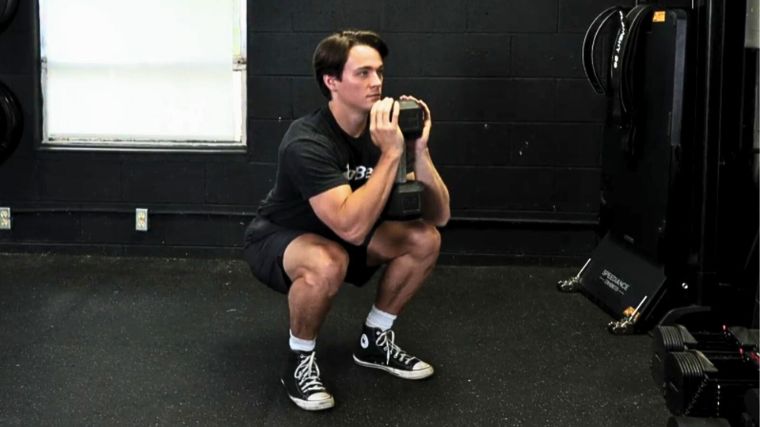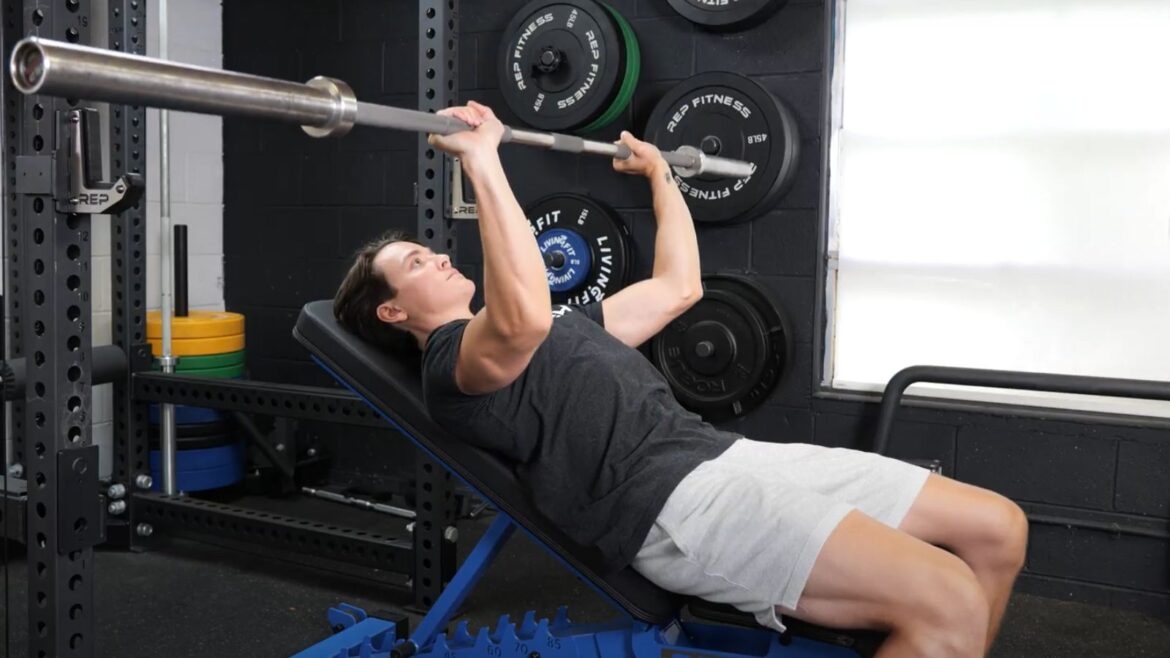Are you a fitness novice? A pro? Maybe you simply enjoy an occasional walk on one of the best treadmills. However you identify in your fitness journey, perusing exercise statistics can help you set realistic fitness goals and fully realize the benefits of physical activity.
Let’s check out these health statistics to gauge what our fellow Americans are doing — or not doing — to improve their wellness and overall health. We’ll uncover the fitness statistics first, and then dig into the many benefits of physical activity.
Fast Facts about Exercise
- 150 minutes of moderate exercise is the weekly recommendation to maintain health; this equates to five 30-minute workouts per week.
- According to the Centers for Disease Control and Prevention (CDC), 47% of adults meet the standards for aerobic exercise. (1)
- Nearly one-third of Americans are inactive. (2)
- Those who do not exercise regularly have a 20% to 30% increased risk of death when compared to those who are active. (2)
- Men are 5% more active than women. (2)
American Exercise Statistics
The CDC recommends at least 150 to 300 minutes of physical activity a week of moderate-intensity exercise, 75 to 150 minutes a week of vigorous-intensity exercise, or an equivalent combination of moderate and vigorous-intensity aerobic activity. (3) Strength-training guidelines from the same source recommend moderate-intensity (or greater) exercise involving all major muscle groups on two days a week or more. Only 24.2% of American adults meet the guidelines for aerobic and strength-training activity.
A 2018 research article from the American Journal of Preventive Medicine (AJPM) examined muscle-strengthening exercises and their association with adverse health conditions among U.S. adults. The research found that 58% of Americans reported participating in no muscle-strengthening exercise. (4)


Research compiled by Statista noted that around 34% of Americans walk for exercise, making it one of the most popular forms of exercise, while 15% of Americans run for exercise. (5)(6)
A datasheet from the CDC on adult physical activity outside of work found that the most active state was Colorado, with 82.7% of the state population being physically active in 2020.
Mississippi was the least active state, with 67% of the population physically active in 2020. (7)
[Related: Cardio Workouts at Home]
Exercise Statistics by Age Group
Exercise statistics do more than tell us fitness facts — they can help identify patterns that lead to solutions for better health.
Knowing that 81% of 11- to 17-year-olds are physically inactive could provide helpful insight into adolescent obesity. (8) Understanding that exercise can help reduce falls in older adults by 21% may encourage the implementation of balance exercises for seniors on a more regular basis. (9)
The chart below compares data from the CDC on physical activity concerning age and gender. (10)
Key Takeaways:
- Males are more active than females in every age group.
- Physical activity decreases with each age group in both males and females.
- Adults aged 18 to 34 have the highest percentage of physical activity.
- There is a significant decrease in physical activity — in both genders — in the age range of 65 and older.
Benefits of Exercise
Whether you work out for aesthetics, athletics, functional movement, or overall health promotion, regular exercise can check many benefit boxes for people of all ages. (11)
A shocking statistic from the WHO states that insufficiently active people have a 20% to 30% increased risk of death compared to those who are physically active. (2)
Let’s get into some health benefits of regular physical activity.
Cardiometabolic Health
Cardiometabolic health refers to the complex relationship between cardiovascular health (heart, blood pressure, and cholesterol levels) and metabolic health (body composition, blood sugar levels, and abdominal fat).
A 2022 study from the National Institute of Health (NIH) investigating national health trends concluded that Americans are in need of cardiometabolic public health interventions. Cardiometabolic health has been poor and worsening, with only 6.8% of adults having optimal cardiometabolic health. (12)


The benefits of cardio exercises like running, cycling, and rowing contribute to “cardiovascular health, endurance, stamina, and muscular endurance,” says certified personal trainer and BarBend expert Amanda Capritto. Research shows that cardiovascular disease, high blood pressure, and chronic diseases like type 2 diabetes can be improved or eliminated with frequent aerobic exercise — even at low intensities. (13)
Improved Physical Fitness
As we age, we progressively lose strength, mobility, and flexibility. (14) Things that once seemed easy can begin to be more difficult, affecting our overall well-being. As a personal trainer myself, I’ve found that my senior clients who have focused on staying active throughout their years are in far better physical condition than those who have not.
BarBend expert and certified personal trainer Alex Polish explains that when they are consistent with their training, “lots of little things get easier, like going up flights of stairs or doing all my chores in a flurry of activity when the baby goes to bed.”
Their positive perspective: “Finding out your body can be capable of more as you get older is incredible, and working out regularly makes that happen.”
Bone Health
To improve your bone health, grab yourself a set of the best dumbbells to strengthen those bones! Strong, healthy bones reduce the risk of injuries and fractures, especially in older adults. A 2023 study from the NIH concluded that out of the participants studied, resistance training consistently maximized bone strength, improved body strength and balance, and reduced fall incidences. (15)
“Benefits of resistance training include increased muscle mass, strength, bone density and bone health, balance and coordination, and independence into old age,” says Capritto.


According to data from the World Health Organization (WHO), osteoporosis increases with age and over 200 million people have been diagnosed with it. Worldwide, there are approximately 9 million fractures per year as a result of osteoporosis. (16)
Cognitive Outcomes
Spoiler alert — our brain typically isn’t as sharp as we progress in age. But there is good news. Physical activity has been shown to positively impact cognitive processes, such as memory, problem-solving, attention, perception, learning, and reasoning in older adults. (17)
These processes are important for everyday tasks and can improve overall quality of life.
According to a study on the effects of exercise on cognitive functioning, anaerobic and aerobic physical activity are associated with fascinating effects in neuroplastic phenomena, cognitive functions, and gene expression. (17)
But if you’re not into the science behind it all and just want to be a whipper-snapper in your 80s, stay consistent with those fitness classes or the best cardiovascular exercises.
Mental Health
Thanks to “Legally Blonde,” many people know that exercise releases endorphins, a feel-good hormone. Physical activity can provide a mental boost and can be used as a means to reduce stress, anxiety, depression, and sleeplessness. (18)
A 2023 NIH study shows that complicated health conditions such as alcoholism, schizophrenia, and Alzheimer’s disease have also seen positive changes with the intervention of regular physical activity. (18)
“Exercising in whatever way feels good for you — that might even be just going for walks or gardening — can help reduce symptoms of depression and anxiety. It’s not a cure-all, for sure, but exercise is part of so many trauma treatments and therapy routines for a reason — it works,” says Polish.
Reduced Body Fat
Depending on who you ask, some will say the most effective way to lose weight is by hammering out some of the best barbell exercises. Others claim it’s all about cardio. Weightlifting, aerobic, and high-intensity interval training have all been shown to be equally effective in weight loss, as long as energy expenditure is equal. (19)


According to data from the WHO, adult obesity’s prevalence has more than doubled since 1990, and adolescent obesity has quadrupled. (20) Physical inactivity can contribute to obesity and the risk factors that come with it.
Weight loss is a common goal for those looking to start an exercise program. Exercise programs, combined with a healthy diet, can offer a one-two punch to combat body fat. For those looking to lose a significant amount of weight, working with a healthcare professional to set physical activity guidelines can be helpful.
Final Word
Looking at exercise facts can give a macro view of national and global health and fitness. Those statistics can be insightful for determining micro solutions for your personal health and setting individual goals. The health benefits of regular exercise go far beyond scoring a six-pack or fitting into a pair of skinny jeans. People of all ages can reap the benefits of physical activity and increase their well-being.
By implementing physical fitness into your regular routine, you have the potential to reduce or eliminate heart disease, obesity, poor mental health, and many other chronic diseases. If you’re not a fan of the gym, check out our picks for the best home gym equipment — but whatever you do, stay active!
Exercise Statistics FAQs
What percentage of the population does exercise?
Only 23% of U.S. adults meet the recommended guidelines from the Centers for Disease Control and Prevention (CDC) for aerobic and muscle-strengthening activities. The data shows that around 51% of adults meet the recommended amount of aerobic activity, but only about 24% meet the recommendations for both aerobic and muscle-strengthening activities. (1)
What percentage of people are physically fit?
According to data from the World Health Organization (WHO), 31% of adults and 80% of adolescents do not meet the recommended levels of physical activity. Conversely, 69% of adults and 20% of adolescents meet the recommendations. (2)
Is exercise increasing or decreasing?
On a global scale, the WHO reports that exercise is decreasing. If the trend continues, the number of adults not meeting recommended levels of physical activity is projected to rise to 35% by 2030. (2)
What percentage of people run for exercise?
Research from Statista reports that 15% of Americans run for sport. (6) Running and jogging are one of the most popular forms of exercise, with over 155.5 million people participating in a running or walking activity in 2022, according to the Sports and Fitness Industry Association. (21)
References
- FastStats. (n.d.). Exercise or Physical Activity. https://www.cdc.gov/nchs/fastats/exercise.htm
- World Health Organization: WHO. (2024, June 26). Physical activity. https://www.who.int/news-room/fact-sheets/detail/physical-activity
- Adult Activity: An Overview. (2023, December 20). Physical Activity Basics. https://www.cdc.gov/physical-activity-basics/guidelines/adults.html#:~:text=According%20to%20the%20current%20Physical,See%20steps%20for%20getting%20started.
- Bennie, Jason A. et al. (2018). Muscle-Strengthening Exercise Among 397,423 U.S. Adults: Prevalence, Correlates, and Associations With Health Conditions. American Journal of Preventive Medicine. 55(6); 864-874
- Statista. (2024, March 28). Popularity of walking for fitness in the U.S. 2010-2023. https://www.statista.com/statistics/191984/participants-in-walking-for-fitness-in-the-us-since-2006/#:~:text=The%20number%20of%20people%20who,was%202013%2C%20at%20117.4%20million.
- Topic: Running & Jogging. (2024, January 10). Statista. https://www.statista.com/topics/1743/running-and-jogging/#:~:text=In%20the%20United%20States%20alone,U.S.%20in%20the%20same%20year
- Adult physical inactivity outside of work. (2024, February 1). Physical Activity. https://www.cdc.gov/physical-activity/php/data/inactivity-maps.html?CDC_AAref_Val=https://www.cdc.gov/physicalactivity/data/inactivity-prevalence-maps/index.html
- World Health Organization: WHO. (2019, November 22). New WHO-led study says majority of adolescents worldwide are not sufficiently physically active, putting their current and future health at risk. World Health Organization. https://www.who.int/news/item/22-11-2019-new-who-led-study-says-majority-of-adolescents-worldwide-are-not-sufficiently-physically-active-putting-their-current-and-future-health-at-risk
- Langhammer, B., Bergland, A., & Rydwik, E. (2018). The Importance of Physical Activity Exercise among Older People. BioMed Research International, 1–3.
- Elgaddal, N., Kramarow, E. A., & Reuben, C. (2022). Physical Activity Among Adults Aged 18 and Over: United States, 2020. National Center for Health Statistics.
- Wang, Y., & Ashokan, K. (2021). Physical exercise: An overview of benefits from psychological level to genetics and beyond. Frontiers in Physiology, 12.
- O’Hearn M, Lauren BN, Wong JB, Kim DD, Mozaffarian D. (2022). Trends and Disparities in Cardiometabolic Health Among U.S. Adults, 1999-2018. J Am Coll Cardiol. 12;80(2):138-151.
- Tian D, Meng J. (2019). Exercise for Prevention and Relief of Cardiovascular Disease: Prognoses, Mechanisms, and Approaches. Oxid Med Cell Longev. 3756750.
- Maden-Wilkinson, TM, McPhee, JS, Jones, DA, Degens, H. (2015). Age-Related Loss of Muscle Mass, Strength, and Power and Their Association With Mobility in Recreationally-Active Older Adults in the United Kingdom. J Aging Phys Act. 23(3):352-60.
- Bae, S., Lee, S., Park, H., Ju, Y., Min, S., Cho, J., Kim, H., Ha, Y., Rhee, Y., Kim, Y., & Kim, C. (2023). Position Statement: Exercise Guidelines for Osteoporosis management and fall Prevention in Osteoporosis patients. Journal of Bone Metabolism, 30(2), 149–165.
- Porter, J. L., & Varacallo, M. (2023, August 4). Osteoporosis. StatPearls – NCBI Bookshelf. https://www.ncbi.nlm.nih.gov/books/NBK441901/#:~:text=Over%20200%20million%20people%20have,Pathophysiology
- Mandolesi, L., Polverino, A., Montuori, S., Foti, F., Ferraioli, G., Sorrentino, P., & Sorrentino, G. (2018). Effects of physical exercise on cognitive functioning and wellbeing: Biological and psychological benefits. Frontiers in Psychology, 9.
- Mahindru, A., Patil, P., & Agrawal, V. (2023). Role of Physical Activity on Mental Health and Well-Being: A review. Cureus. https://doi.org/10.7759/cureus.33475
- Bellicha, A, et al. (2021). Effect of exercise training on weight loss, body composition changes, and weight maintenance in adults with overweight or obesity: An overview of 12 systematic reviews and 149 studies. Obes Rev. 22(4); e13256.
- World Health Organization: WHO. (2024, March 1). Obesity and overweight. https://www.who.int/news-room/fact-sheets/detail/obesity-and-overweight
- Definition, B. (2023, September 27). SFIA | 2023 Tracking the Fitness Movement Report. Sports and Fitness Industry Association. https://sfia.org/resources/sfias-tracking-the-fitness-movement-report-sees-increase-in-number-of-americans-working-out/
